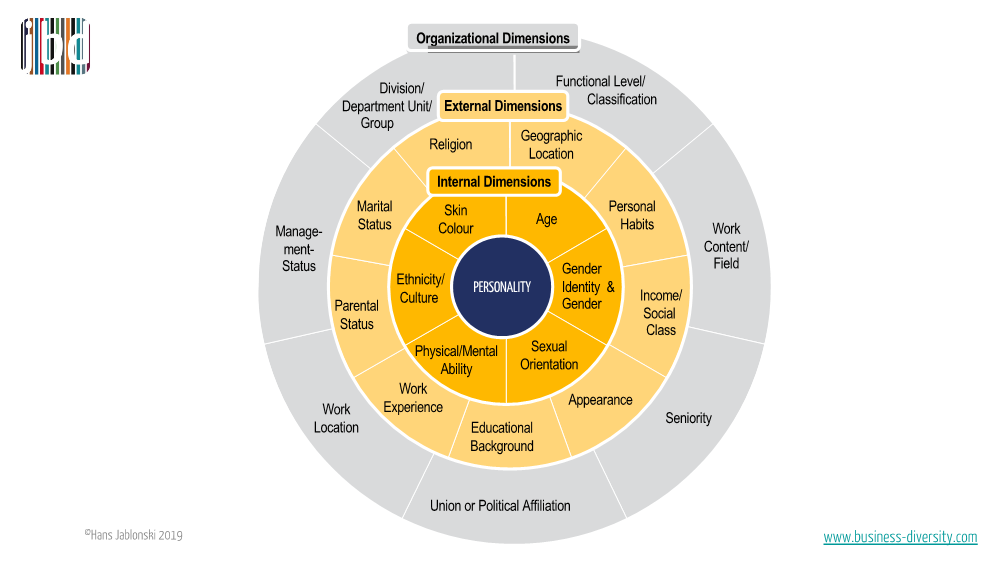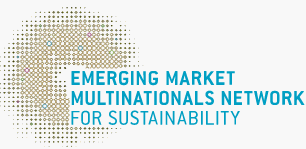Diversity and inclusion: key elements of enterprise success
2019-07-26GoldenBeeChina Sustainability0

Interviewee|Hans W. Jablonski,Founder of Jablonski Business Diversity
More and more senior managers begin to realize that employee diversity is closely related to enterprise creativity, productivity, customer satisfaction and market competitiveness. Therefore, more and more companies, especially large multinational corporations, have begun to spare no effort to promote diversity and inclusion within the organization, but how’s the effect? The main technical jobs in Silicon Valley are still occupied by white men, and some big enterprises are still sued for discrimination. Diversity is only a number, it can reflect only the personnel structure of the enterprise, but it does not necessarily guarantee the cultural inclusion of the enterprise, nor can it guarantee the innovation vitality, high productivity and market competitiveness. In order to better understand the definition and management of diversity and inclusiveness, we interviewed Hans W. Jablonski, a diversity and inclusion expert from Germany, and asked him to share the power and approach from "diversity" to "inclusion".
Hans W. Jablonski, one of the earliest German researchers in diversity management, is one of the co-authors of the Diversity Charter in Germany and other European countries. He is also an expert in the Global D&I Benchmarking Tool (GDIB) team and a member of the ISO Committee that defines Diversity & Inclusion (D&I) global standards. Eight years ago, Hans founded his own company, Jablonski Business Diversity (JBD), and provided diversity and inclusion management consulting services to companies around the world.
Hans W. Jablonski, one of the earliest German researchers in diversity management, is one of the co-authors of the Diversity Charter in Germany and other European countries. He is also an expert in the Global D&I Benchmarking Tool (GDIB) team and a member of the ISO Committee that defines Diversity & Inclusion (D&I) global standards. Eight years ago, Hans founded his own company, Jablonski Business Diversity (JBD), and provided diversity and inclusion management consulting services to companies around the world.

China Sustainability Tribune: Many studies have shown that workforce diversity can lead to innovation, higher productivity and lower employee turnover rate. But today we still see examples of friction caused by diversity. Recently, for example, employees at Microsoft questioned whether a company could benefit from diversity and they argued that diversity was unfair to white people. What do you think of this phenomenon? How should we understand diversity and inclusion and the difference between the two words?
Hans: Yes, diversity is a success factor for companies, and it needs a professional approach to implement and benefit from diversity management. But we think that diversity stands for differences and similarities among people. Statistics tell us, that in many companies the mix of people is inadequate, and this imbalance increases with a higher level of hierarchy. The C-suite (top-management level) of companies is dominated by white men within a specific age range and with similar education and networks. The talent pipeline in most companies is dominated by people of the same category. In view of these phenomena, two aspects need to be considered:
1. Is it assured that these people are truly the best leaders and talents? Some people in many cases are perceived as best, but there are blind spots (unconscious bias) for other talents, e.g. women.
2. Does this mix provide enough perspectives for successful business decisions in a world that becomes increasingly complex? Studies demonstrate that companies and teams are more productive if they mirror the complexity of their client base or society in their workforce composition.
But Diversity on its own is not the main trigger. A company should strive for a culture where people are reflecting their unconscious bias (prejudice) and are open to raising awareness. “Inclusion” conduces to this open culture with mutual respect for all kind of talents. In general, diversity management is about the right mix of people and promotes an inclusive culture. In this process (sometimes quite emotional) discussions about talents may arise internally. This is a crucial part of the desired change.
China Sustainability Tribune: Does diversity have the same power in large multinationals and small and medium-sized enterprises? Diversity has many different types. Should different enterprises focus on promoting different types of diversity?
Hans: Diversity management could be a success factor for companies and organizations of all sizes. Usually large multinational companies have strong processes and cultures that keep the current status quo alive and people in their comfort zone. Hence, large companies have to pay more attention to diversity (heterogeneity) and inclusion (an open culture for all kinds of talents).
In the graphic below, you see three circles of Diversity Dimensions. The “Internal Dimensions” are most affected by in- or exclusion and are essential areas of concern in many companies’ diversity management. Companies focus on their corresponding core dimensions, that impact their businesses most significantly. “Age” and “Cross-Culture” are the most identified focus in Asia-based companies I have worked with; in some cases, “disability” as well. Companies from Europe and the Americas have a broader approach that is embracing all internal dimensions. Yet for them, most recognized dimension is “gender” but also “age” and “cross-culture”.
Hans: Yes, diversity is a success factor for companies, and it needs a professional approach to implement and benefit from diversity management. But we think that diversity stands for differences and similarities among people. Statistics tell us, that in many companies the mix of people is inadequate, and this imbalance increases with a higher level of hierarchy. The C-suite (top-management level) of companies is dominated by white men within a specific age range and with similar education and networks. The talent pipeline in most companies is dominated by people of the same category. In view of these phenomena, two aspects need to be considered:
1. Is it assured that these people are truly the best leaders and talents? Some people in many cases are perceived as best, but there are blind spots (unconscious bias) for other talents, e.g. women.
2. Does this mix provide enough perspectives for successful business decisions in a world that becomes increasingly complex? Studies demonstrate that companies and teams are more productive if they mirror the complexity of their client base or society in their workforce composition.
But Diversity on its own is not the main trigger. A company should strive for a culture where people are reflecting their unconscious bias (prejudice) and are open to raising awareness. “Inclusion” conduces to this open culture with mutual respect for all kind of talents. In general, diversity management is about the right mix of people and promotes an inclusive culture. In this process (sometimes quite emotional) discussions about talents may arise internally. This is a crucial part of the desired change.
China Sustainability Tribune: Does diversity have the same power in large multinationals and small and medium-sized enterprises? Diversity has many different types. Should different enterprises focus on promoting different types of diversity?
Hans: Diversity management could be a success factor for companies and organizations of all sizes. Usually large multinational companies have strong processes and cultures that keep the current status quo alive and people in their comfort zone. Hence, large companies have to pay more attention to diversity (heterogeneity) and inclusion (an open culture for all kinds of talents).
In the graphic below, you see three circles of Diversity Dimensions. The “Internal Dimensions” are most affected by in- or exclusion and are essential areas of concern in many companies’ diversity management. Companies focus on their corresponding core dimensions, that impact their businesses most significantly. “Age” and “Cross-Culture” are the most identified focus in Asia-based companies I have worked with; in some cases, “disability” as well. Companies from Europe and the Americas have a broader approach that is embracing all internal dimensions. Yet for them, most recognized dimension is “gender” but also “age” and “cross-culture”.

(Diversity Dimensions)
China Sustainability Tribune: So, what are the basic requirements or principles for an enterprise to boost the power of diversity?
Hans: In the past 20 years, I have worked with many companies on diversity & inclusion, the following success factors have been identified:
1. The top management has understood, how diversity & inclusion impact the company’s success and demonstrated ownership and provided support.
2. The business impact of diversity & inclusion has been identified as well as the key dimension company focuses on.
3. A strategic roadmap with objectives has been developed and actions supporting the business strategy of the company were planned.
4. All leaders and employees have been made aware of these objectives and the impact of diversity & inclusion and are capable to implement them in their daily work.
5. Monitoring the progress and results of the implementation by the top management.
These factors support the company to both achieve the right mix of people on all organizational levels and business units and successful. It also promotes an inclusive culture where all kinds of talents feel motivated to contribute their full potential.
China Sustainability Tribune: Although many companies highlight the importance of workforce diversity and address the need of workforce diversity, the development of diversity is not satisfying. Data shows, the main tech jobs in Silicon Valley are still held by white men. Therefore someone argued that the majority of diversity projects currently underway did not increase diversity. Do you agree or disagree?
Hans: Diversity is less a sprint but more a marathon that needs continuous impulses to realize an inclusive culture and result in financial success. Today’s business environment expects quick results, but it requires a closer look at diversity mnagement to see the “needle” moving. Many companies implemented diversity management years ago and have experienced a steep learning curve. Not all initiatives have been successful, and companies learned what worked best for them and their culture to make progress. Nevertheless, companies have reviewed their talent pipeline, talent pools and beneficial results can be expected in the near future.

(This image is from the Internet)
China Sustainability Tribune: Some argue that it is easier to change processes than to train people to eliminate biases. They think companies should redesign their hiring and promotion processes to eliminate biased options from the beginning. What do you think of this view? What is the role of technology in eliminating unconscious bias?
Hans: As mentioned above, unconscious bias impacts the decisions of leaders. Decisions mostly do not follow objective criteria although leaders think that their decisions are driven by objective data. What companies do to avoid this bias are the following:
1. Raising awareness for unconscious bias among decision maker and provide individual support to minimize unconscious bias.
2. Designing the decision-making process in a way, that unconscious bias is eliminated. The most common example is “blind applications”. These applications exclude picture, gender and/or other demographical data.
Nowadays technology and algorithm are increasingly used in human decision-making processes to eliminate unconscious bias. But these algorithm or technology may have an inherent bias, depending on the programmer and developer. It needs to be ensured and guaranteed that programs are free of (unconscious) bias.
China Sustainability Tribune: What are the different challenges facing diversity management for companies in different countries and different social cultures? What are the differences in understanding and managing diversity between the companies in mono-ethnic state Japan and the immigrant nation of the United States?
Hans: This is an interesting question regarding Japan. Japan has a shrinking population and the oldest population in the world. Japanese companies do not have enough staff to fill all positions. In 2018 the number of foreign internships has risen by 20%. Therefore, there is an on-going discussion about immigration in Japan. In addition, the country has set quotas for women in leadership positions and opened the discussion about sexual orientation, what both seem to be a big cultural change.
The need for diversity and the approach to diversity management differ in both countries and companies. The environment and cultural status quo matter and determines the diversity strategy accordingly.
China Sustainability Tribune: Nowadays, many Chinese enterprises have started their globalization strategy. What are your suggestions for their diversity management? Are there any specific steps for them to take?
Hans: I would suggest that Chinese enterprises identify the cultural and demographic challenges they face in doing global business. From my experience, this could be two items:
1. Building or strengthening competence in dealing with cross-cultural differences.
2. Recognizing different attitudes of members from different generations. Younger people may have different education, knowledge, preferences, and perspectives; especially on the digital matter. In order to profit from people of older generations and the knowledge of younger generations, cross-generational teams work best if they recognize and appreciate these differences.
I think in general the impact of demographic changes in China and its impact among the customer base should be considered. And matching strategies should be identified and implemented. As far as I know, enterprises in China do not start from zero and are already prepared with regard to diversity management.
Best Practices
- The 100-year brand — Air Liquide also has a sense of juvenile
- Beijing Public Transportation Corporation: Developing green transportation to build a harmonious and livable capital
- CGN: Building a modern factory in barren deserts and developing a new win-win cooperation model along “Belt and Road”
Upcoming Event

All the materials on the site “Source: XXX (not from this site)” have been reprinted from other media. They do not imply the agreement by the site.
All the materials with “Source: CSR-China Website” are the copyright of CSR-China Website. None of them may be used in any form or by any means without permission from CSR-China Website.
GoldenBee Official WeChat
Copyright © Csr-china.net All Right Reserved.
京ICP备19010813号










